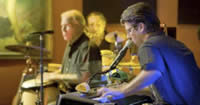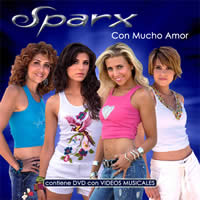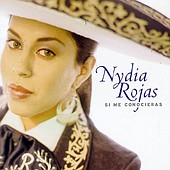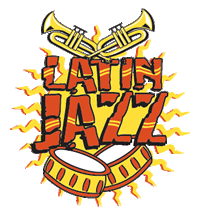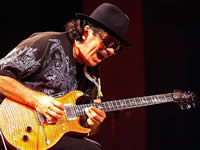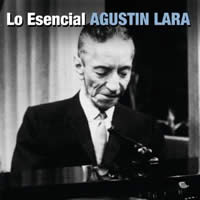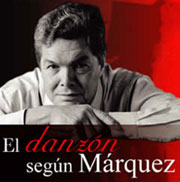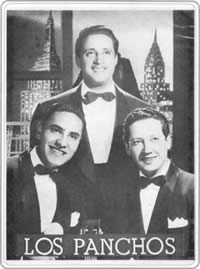Course Information Overview
- Latin@ Music Ensemble
- Thursdays 7:00-9:30PM
- Cypress 217 (MUSIC)
-
Once upon a time the winged serpent Quetzalcoatl ruled the air and the waters, while the god of war ruled the land. Theirs were rich days, full of battles and the exercise of power, but there was no music, and they both longed for a decent tune. The god of war was powerless to change the situation, but the winged serpent was not. He flew away towards the house of the sun, which was the home of music. He passed a number of planets, and from each of them he heard musical sounds, but there were no musicians to be found. At last he came to the house of the sun, where the musicians lived. The anger of the sun at the serpent's invasion was a terrible thing to witness, but Quetzalcoatl was not afraid, and unleashed the mighty storms that were his personal speciality. The storms were so fearsome that even the house of the sun began to shake, and the musicians were scared and fled in all directions. And some of them fell to earth, and so, thanks to the winged serpent, we have music.
Salmon Rushdie from The Ground Beneath her Feet
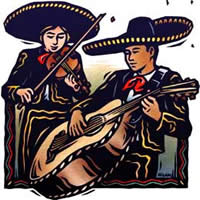
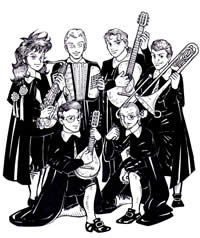
Course Description
Begun during the Spring 2010 by CSUN Music majors Abraham Herrera and Efrian Arrellano,the CSUN Mexican Music club ensemble was dedicated to playing arrangements of music from Mexico or Mexican artists. Professor Peter García has served as faculty adviser, co-director, guitarist and saxophonist since the group's founding. The ensemble's debut included several performances on campus events including the annual Day of the Dead Festival, a memorial service, and performed the entire wedding mass (Mary Frances Reza’s “Misa Hispana”) and an entire hour long set of popular instrumental dance music, boleros, and ranchera songs at the reception for Elizabeth Gutiérrez and Luis Rodriguez (April, 16, 2011) at Our Lady of Lourdes in Northridge.Today, the ensemble has been renamed as the CSUN Latin@ Music Ensemble and is under the musical direction of CSUN Ronald E.McNair scholar and Sally Casanova Pre-Doctoral undergraduate candidate in Chicana/o Studies & Music Breadth Studies, Nicholas M. Medina. More prominent appearances for the CSUN Latin@ Music Ensemble Club include the CSUN College of Humanities Commencement on Wednesday, May 23, 2012.
Latinas and Latinos in the United States represent the largest growing Ethnic community after non-Hispanic Whites in 2009 (Latinas/os comprise 14 percent of the U.S. population, approximately 50 million people). Likewise, California State University has a total undergraduate and graduate student population of 36, 911 with 11,612 or 36% of the campus identified as Hispanic or Latina/o. As part of the Title V legislation, CSUN has been designated a Hispanic Serving Institution (HSI) intent to "expand educational opportunities for and improve the academic attainment of Hispanic students: and expand and enhance the academic offerings, programs, quality, and institutional stability of colleges and universities that are educating the majority of Hispanic college students and helping large numbers of Hispanic students and other low-income individuals complete postsecondary education." (see 2008 CSUN Annual Performance Report by Katherine S. Dabbour HSI Project Director) There is, unfortunately, a serious lacuna in knowledge about Latina and Latino cultural practices and identities on the CSUN campus. One way that Latinos and Latinas interact with and create culture, identity, gender, class, sexuality, and tradition is through “performance:” music, dance, musical theater, body and visual art, spoken word art including rap (hip-hop), performance activism, and street performance, as well as through the everyday practices of identity.
Generally, when asked their ethnicity, most Latinas and Latinos do not specifically refer to themselves as Latinas or Latinos or Hispanics. A more precise response, especially in Spanish and depending on the speaker’s origin and native region, for example, might include Chicana/o, Mexican, Boricua, Puerto Rican, Cuban American, Tejana/o, or Hispana/o. Typically “Latina” and “Latino” are chosen over “Hispanic” as the generic labels to describe this diversity because the latter emphasizes the common Spanish language and complex diasporic identities, which is imprecise and less accurate in describing the Western Hemisphere’s Latin American cultural hybridity and mestizaje from Native American, African American, and European cultural roots.
This re-naming of the CSUN Mexican Music Ensemble Club is being utilized within the very borderland populations over other politicized terms like Chicana and Chicano. According to Chicano political activist José Angel Gutiérrez, the Chicano Movement, has died in the public arena. He believes that “There is no contemporary public discussion of that movement or its leaders. The various campuses that once had Chicano Studies programs and courses have declined. “Chicano” as a self-descriptive term has lost out to Hispanic. There are few Chicanos and Chicanas left. The face of Chicano music continues to undergo a profound transformation as the Latino population in the US-- and in traditionally Chicano communities-- comes to be increasingly diverse (see Rafael Peerez-Torres 2006, 333). Almost everyone is either Hispanic or Latina/Latino. Likewise, social critic Rafael Pérez-Torres’ in his analysis of “Chicano Hip Hop and Postmodern Mestizaje” reexamines “the tension between the fluid and the fixed evident in the uses of the term ‘mestizaje’ finding their parallel within critical discourses that range from the poststructural to the postcolonial to the postmodern” (2006, 325). Pérez-Torres defines postmodernism as the death of political action while considering a semiotics of music. Certain musics, he cautions may go as far as invoking a simulacrum of Latino music, however, "with the growing success of Rock en Español, the increased exchange of musical commodities across national and cultural borders, the proliferation and diversification of music and music video programming in all countries and continents, the term “Chicano music” itself seems somewhat antiquated.” (2006, 332)
Latina/o oppositional usage of this same name is aimed toward generating an umbrella term for linking a diversity of cultures and ethnicities across this hemisphere that share a similar relationship to the last (we hope) globalizing, Anglo, and colonizing powers of the twentieth-century. These powers worked through the denigration and replacement of indigenous languages with European languages, including Spanish, English, Portuguese and French, and by culturally and economically re-locating “Latin@” bodies, perceptions and presences to a subservient status in relation to the colonizing Anglo gaze and apparatus through a relentless and ongoing national conservative backlash intent on undoing civil rights gains from the 1960s including affirmative action, bilingual education, and now targeting progressive, critical, and ethnic studies programs from high school and university campuses across the nation.
Rafael Pérez-Torres examines the 1999 Cinco de Mayo festivities in Los Angeles, for example, the live entertainment was comprised of bands that mixed, matched, and melded tejano, cumbia, ranchera, norteño, banda, merengue, and salsa music. "This crossover, this mestizaje, may very well mark the end to one phase of Chicano musical development." For Pérez-Torres, "There emerges in the music a recognition that a broad conceptualization of mestizaje can be both a liberating process and one inscribed by tremendous political, social, and cultural conflict. The music that highlights this double movement of connection to a troubled history and affirmation of liberatory inspiration displaces the easy musical stylings of pop musicians profiting from the growth of a Latino presence in the United States." (2006, 334)
Thus, the terms “Latino” and “Latina” must be interrogated for their liberating, and their confining applications. What emerges in this interrogation is a conflation inside the term “Latin@” of a new, global, and dissident constituency that U.S. Latin@ borderlands theorists describe as an “Indigenous/Chican@/Latin@/African@/Asian” mestizaje, a presence that has created the borderland performance politics. The CSUN Latin@ Music Ensemble Club is negotiating musical hybridity and mestizaje by performing mariachi repertoire but not following strict ensemble codes and instrumentation. Moving from paso dobles and mariachi polcas to popular US Latin cumbias is itself a form of musical “code switching,” between world musics and their mixtures, and by “haciendo caras “(Anzaldúa), commitment to making oneself through negotiating hybrid racial and mestiza/o identities in situational and culturally specific ways--meaning not strictly Mexican or Chicana/o or Latina/o for that matter.
This is NOT exclusively a Mexican American mariachi ensemble, Latina/o folk orchestra, or Latin popular dance band although we will be performing sones, jarabes, huapangos, and repertory typically associated with mariachi and/or jarocho ensembles and Spanish language folk orquestas. Nor is the group a salsa band playing exclusive Latin Jazz arrangements of son cubano, bachata, or punta. The idea is to incorporate all orchestral instruments and blend old and new genres into something unique, original, and mixed reflecting contemporary changes and hybridity in Mexican, Latina/o, Hispana/o-Caribbean, and Chicana/o musics today. And in doing so, we’ll expose others to music they otherwise might never hear at the same time that the ensemble deliberately blurs the rigid distinctions between serious and popular, folk and classical art music performances.
The nineteenth-century British poet Mathew Arnold viewed culture as the study of the “best” that has been expressed about the “human” experience. Curiously enough, these “best” expressions almost always resolve around the cultural innovations of post-Renaissance Europe-- “perspective” in painting, “tonal harmonies” in music and “narrative” in literature. Other cultures--from ancient Greece and Rome to present day Asia and Africa--are then evaluated in terms of their relationship to the cultural devices of post-Renaissance Europe. Most are found wanting. European culture or “high art" also regarded as serious and also elitist culture becomes validated from this perspective because it is the “best” that humans have ever achieved, even though most humans throughout history have had very different definitions of culture and would not consider the achievements of Europe automatically better than their own. This has been and unfortunately remains the focus of most academic music departments and conservatory style conservatories of music throughout the United States, Mexico, and Latin America.
Rather than celebrating the individual genius of works of art presumed to have “transcendent” and “universal” value, ethnomusicology, cultural and ethnic studies, anthropology, and folklore scholars see the creation of culture as social and historical, and ask why different standards emerge at different times. This work breaks with the excessive preoccupation with European and Euro-American life and cultures within the university music department, but it also mandates the study of other world-views and experiences, of popular culture forms as well as elite art, of the cultures of the colonized and oppressed peoples as well as the culture of their conquerors, of cosmologies, epistemologies, and philosophies with complicated and sometimes contradictory relationships with the traditions of the Enlightenment (George Lipsitz 2006, 52).
In a similar debate, cultural historian Edward Said points out the serious shortcomings of canonical aesthetics or “Western” hegemony in his book: Musical Elaborations. He explains that “no one is saying that canons do not in fact contain Arnoldian touchstones. Obviously they do,” but what interests Said about cultural canons and their consequences in general is that “they tend to set limits and priorities too rigidly and too hierarchically” (1991, 60). “Too often, the canon's eminence is associated with a sort of Darwinian or Hegelian inevitability, its laboriously constructed social authority either discounted or forgotten altogether.” Moreover, the whole landscape in which canons belong is blotted out, which leaves an “unappealingly barren setting presided over by approved masterpieces and venerated authorities” (Said 1991, 60) However, decolonial theorist Walter Mignolo reminds us that a privileged way to understand the persistence of colonial discourses and managerial apparatuses is to focus on the power and functionality of literacy (including musical literacy) as a sign and vehicle of "civilization." In doing so, (musical) literacy is central to the attempt to code (material and cultural) space at the micropolitical level insofar as it allows or disallows for categories of subjectivity: "civilized," "literate," "modern," or else: savage, barbarian, backwards, illiterate, uneducated. The introduction of Western patterns of law and knowledge constitutes entire populations into a "subjected group" that receives its determination from other groups and is never opened to the finitude of its [own] existence.
Considering how Latino popular culture heralds heated debates because it is not always certain what we are dealing with when we look to popular culture. Stuart Hall defines popular in any particular period as “those forms and activities which have their roots in the social and material conditions of particular classes; which have been embodied in popular traditions and practices.” What are essential to Hall’s definition of popular culture are the relations that “define ‘popular culture’ in a continuing tension (relationship, influence, and antagonism) to the dominant culture” (2005, 69). Throughout Latin America, the period between 1810 and 1830 marked the beginnings of national independence, which was to have considerable beginnings of the emerging nations. Manifest Destiny was the political experiment guised in romantic nationalism that was used in the nineteenth century to justify the U.S. imperial conquest of the “West.” Before the Treaty of Guadalupe Hidalgo in 1848, the entire Southwest belonged to Mexico. Many contemporary Hispanics and Chicano activists throughout the Southwest borderlands insist the land was stolen by the United States and the region remains “occupied” under U.S. domination and apartheid. According to Rubén G. Rumbaut, “The Mexican War (remembered in Mexico as la invasión norteamericana) was the United States’ first foreign war and transformed the nation into a continental power; the Treaty of Guadalupe Hidalgo that ended it, along with the annexation of Texas that preceded it, expanded the territory of the United States by an area about the size of Western Europe, while severing half that of Mexico (which had achieved its independence from Spain only as recently as 1821)” (2009, 18).
Based on studies of “Historia Musical” a musical manuscript attributed to a popular nineteenth-century musician named Inocencio Martínez available in the Ray John de Aragón Family Archive in the Center for Southwest Research in the Zimmerman Library at the University of New Mexico, Inocencio Martínez lived during the nineteenth century, and based on one of the song lyrics from the document, he was born “dia primero de Enero de 1890. En mi residencia en la Sierra M . . . Condado de Colfax N.M. di un resumen o repaso a este cuaderno, acordandome de todo lo anterior y tambien.” What is most interesting in the “Historia Musical” is the diversity of musical influences from within and outside of Nuevo México and the Southwest borderlands, especially the earliest materials prior to 1846 and the Treaty of Guadalupe Hidalgo. Included in the list of titles are dances dedicated or named after contemporary leaders and historical figures (local, U.S., Mexican, and European), dances from the West Coast, and dances with a Caribbean influence. The “Historia Musical” mentions specific major and minor keys, a few notes on instrumentation, tempo markings and expressive instructions, and number of parts. As occurred in Mexico and Latin America, "a definable national musical style appeared only in the last decades of the (nineteenth) century, under the influence of similar trends in Europe and the emergence of musical genres with folk and popular characteristics which could consititute an obvious source of national identity" (Béhague Music in Latin America: An Introduction 96).
Closer to home in his critical discussion of conservative Hispanic writer, Richard Rodriguez' Days of Obligation, José David Saldivar writes: "One feels jolted to see Rodriguez's writing to recover a cognitive mapping of Alta and Baja California not seen since, perhaps Mike Davis's City of Quartz. Rodriguez seems to want to put behind the earlier polemical assaults on affirmative action and bilingual education and his early 1980s support for the English-only movement. Whereas in Hunger of Memory Rodriguez argued that only through Americanization-- his euphemism for assimilation-- could Chicanos expect to be incorporated into the United States, in Days of Obligation he dialectially negates and overturns that vision: the future of California is its Latinoization (151).
In Border Matters, Saldivar re-considers Guillermo Gomez-Peña's call for “a new kind of cultural studies ‘capable of articulating our incredible circumstances’ on la frontera" (1986, 1 in Saldivar 154) Looking at the extended borderland of Tijuana and San Diego, for Gomez-Peña, as a vast textual machine, a hybrid cyborg that also can map out social and bodily realities. Gomez-Peña's Tijuana/San Diego is, like Donna Haraaway's "cybernetic" organism with real potential for "popular anarchism.” It is that which challenges, transforms, and shocks. It was therefore in the border zones of Tijuana and San Diego where Gomez-Peña's ideas about "in-betweenness" and cross cultural relations in the Americas became the dominant theme of his experimental performance work. As he put it in an interview, "There is a great new fusion taking place between . . . the north and the south . . . . And I think that syncretism is as much a part of U.S. culture as it is in Latin America. The only difference is, the U.S. doesn't have a coherent discourse for it. The real wound in contemporary America is a matter of race and identity" (154).
Seen in this light, as "misunderstanding between cultures " in the Américas, Gómez-Peña's Border Brujo takes on special meaning as "another strategy to let YOU know we [U.S. Latinos/as] are here to stay, /and we'd better begin developing a pact of mutual cultural understanding" (154). So as far as a fixed and heterogenous Chicana/o identity goes, ethnicity, culture, language, and race have already been hybridized in California as a result of intense immigration particularly from Central America and the new Salvadoran-Chicana/o, Guatemalan Chicana/o, Chilango-Chicana/o and even Indo/a- Hispana/o -Chicana/o speak to the new cultural identities and discourse which have emerged and which the CSUN Latin@ Music Ensemble address in Concert, Public, and Improvisational Performance of the U.S. Latina/o Borderlands. Or as Emily Hicks calls "a strategy of translation rather than representation," U.S. -Mexico border writers like Gómez-Peña "undermine the distinction between original and alien culture" (154)
Musicians belonging to the CSUN Latin@ Music Ensemble Club need not be Latin@ or of Mexican/Latin American roots to join.
In fact, we encourage non-Hispanic, Whites, African-Americans, and Asians to audition and join the mestizaje. We are performing original arrangements of music from popular musical artists and serious art music composers like Heitor Villa-Lobos, Alberto Ginastera, Pablo Moncayo, Marco A. Solis, Juan Gabriel, Ramon Ayala, Antonio Aguilar, Consuelo Velasquez, Agustin Lara, María Grever, Rocío Sanz, Miguel Aceves Mejia, Pedro Galindo, José Alfredo Jimenez, Arturo Marquez, Silvestre Revueltas Sánchez, Manuel Ponce, and etc., and arranging for a wider variety of instruments. Vocalists, Guitarists, Violinists, Viola, Cellists, Bassists, Trumpeters, Flutists, Oboists, percussionists whatever you do, we’ll make use of it somehow. Because the CSUN Latin@ Music Ensemble Club is dedicated to the highest musical, aesthetic, and cultural development of the human mind, body, and spirit we remain committed to diversity in musical activism and pedagogy, critical performance studies and world music scholarship at California State University Northridge.
Course Prerequisites
Professor Peter García is faculty advisor and co-director of the Latin@ Music Ensemble Club - this is a student performing and composition group that explores various forms of Latina/o musical expression through original musical arrangements and improvisation providing concerts on and off campus for the local Latina/o and Chicana/o communities, the Music and Chicana/o Studies departments, and as part of campus outreach to local area high schools. Experienced musicians from various Latina/o, Mexican, and Chicana/o styles, genres, and ensembles including conjunto, orquesta, banda, trío, mariachi, salsa, rock en Español, folk, classical, choral, and radical avant-garde are welcome. Familiarity with western notation and fluency in Spanish is helpful but not required.
Student Learning Objectives
Students arrange, compose, perform, and learn a variety of Latina/o, Mexican, and Chicana/o musical styles and dances presenting public concerts and recitals on and off campus featuring various compositions, arrangements, and familiar songs, instrumental arrangments, improvisation, and choral pieces.
Grading
Regular attendance of rehearsals, concerts, performances are required of members. Serious commitment, practice, and rehearsal of repertory prior to rehearsals is required.
Course Schedule
The Latin@ Music Ensemble rehearses on a weekly basis and performs regularly. Concerts are announced in advance and members are expected to attend all performances and rehearsals. Detail regarding rehearsals, ensemble expectations, repertory, audio/video recordings, and announcements are available on the CSUN Latin@ Music Ensemble Club Moodle Site.
